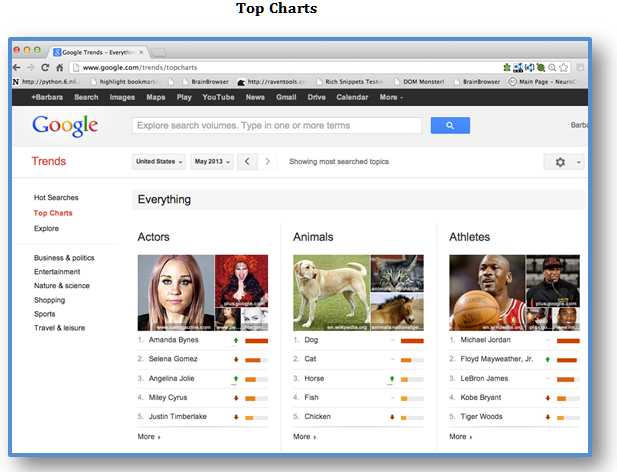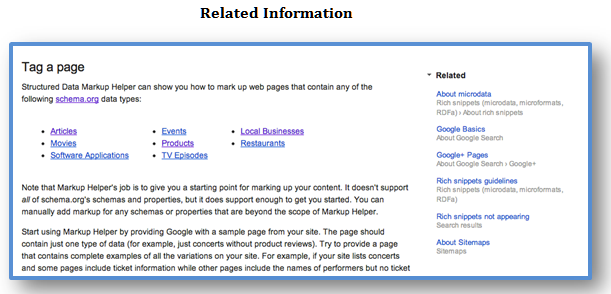Search, Answers & Knowledge Graphs Galore
Google is leveraging the knowledge graph brilliantly, while others have their own version of knowledge graph search. As the knowledge graph changes the SERPs, Google is pushing adoption of semantic technology, gradually replacing its traditional SERPs based on links. The search giant’s innovations are setting the pace for the future of search. For example, Google […]
Google is leveraging the knowledge graph brilliantly, while others have their own version of knowledge graph search. As the knowledge graph changes the SERPs, Google is pushing adoption of semantic technology, gradually replacing its traditional SERPs based on links. The search giant’s innovations are setting the pace for the future of search.
For example, Google Now. Google Now is everything that Siri was purported to have been, and closer to the intention of the DARPA PAL program from which Siri arose. Apple is now stepping up its efforts in this arena, announcing at the Apple Worldwide Developers Conference last week that Siri now has new male and female voices, Twitter search integration, Wikipedia integration and Bing Web search within the app. Where Google goes, others follow.
Knowledge Carousel
Recently, Google has engaged in many experiments in terms of visual display formats testing user engagement, such as the Knowledge Carousel, associated and related searches, anticipated answers, new types of information cards, etc. For example, they recently released the Knowledge Graph Carousel for local searches, as well as expanded the Knowledge Graph to include nutritional information on over 1000 foods. And, as they have stated, this is only the beginning.
Interestingly enough, “knowledge graph” is not a trademarked phrase. Bing has its “Snapshots” (now enhanced with Satori expansion), Facebook has its version of an entity graph, and Yahoo has the “Yahoo! Knowledge Graph.” Indeed, the phrase is rapidly becoming common vernacular.
Google Now leverages the Google Knowledge Graph very effectively to provide users with specific answers to their search questions. All you have to do is say, “OK, Google” and off you go. It is rapidly closing in on their vision of the “Star Trek” computer, which could answer your questions in real time. It’s fascinating to watch and utilize Google Now — and just as fascinating to track its evolution and watch its progression.
Search Adopts Semantic Technology
To what extent does this graph search, or answers provided by semantic Web-like, artificial intelligence-type applications, affect search today? And how can information be formulated on the Web so it’s “findable” by the intended audience?
In many respects, the answer is simple. Understand all these complex technologies and the 216 some odd “signals” that Jason Douglas from Google mentioned at SemTechBiz when discussing the mechanisms Google uses to rank items on the Web. For the SEO analyst, this once again begs the question: how do you ensure your business, or the business you are assisting, has a place in the Knowledge Graph?
That is a somewhat daunting task, to put it mildly; so, let us look at some understandable metrics one can work with. First off, keywords are starting to become superseded by concepts or entities. Find that hard to believe? Below is a depiction of the relatively new Google Trends Top Charts. Note how it is grouped by trending entities (and not keywords).
These entities are derived from the Google Knowledge Graph, initiated by Dbpedia and Freebase, which lie at the heart of the linked data cloud maintained by the semantic Web community, and are extended with instances of entities from Schema.org.
An image of the 2011 Linked Data cloud is illustrated below (along with references), but you can see that DBpedia lies at the very heart of it. (DBPedia will most likely be replaced by wikidata). The diagram is somewhat dated, but a historical look through the information gives a strong indication of the explosive growth of this technology.

Courtesy of Linked Data Cloud
Search engines are able to utilize this linked, structured data in many ways, such as providing enhanced displays in many varieties of engaging and visual formats, direct answers to queries, a strong focus on findability in entertainment and other arenas of interest to search engine users, and so on. This is only the beginning of the mechanisms that can be leveraged to create engaging user experiences by exploiting direct search on consumed and/or otherwise validated verified structured data.
From categories like events and entertainment to Google Shopping and e-commerce itself, the notion of exploiting these entity graphs for increased user interaction and engagement are going to be ever expanding and leveraged by the search engines. In the diagram below, you can see another selection of Google top trending searches; however, at this point, I selected the “shopping” option.
It is also clear how essential it has now become to utilize Google+ for business pages or business entities (and even personally, if you aim to make full use of Google Now).
Google+ is another brilliant mechanism utilized by Google, as without a presence in their social network, it is almost impossible to be visible in their Knowledge Graph.
It should be clear to any user why one would rather “find” than “search.” Search with the old “10 blue links” can be and has been such a frustrating experience that the luxury of a personalized assistant that travels with you as your personal computer (smartphone) is a joy to contemplate. Not that this is a solved problem, but it’s getting there.
However, it is not without some cost to the user, as personalized answers (in Google Now, this takes the form of Cards) in search results and displays from Google Now are effectively served up specifically tailored to each user. Remember, your phone acts in many ways as a sensor you carry around with you, and thus records an enormous amount of your activities/behavior. (Which can later then be used to get the right information to you, at the right time, which is: Here and Now).
From my perspective, the benefits far outweigh the risks, and it is a fascinating era to be living in (e.g., I happen to be geospatially challenged and rely on computerized navigational devices to find my way around in foreign locations). However, especially in light of the PRISM leak, there are many more who are becoming leery of the potential privacy invasion.
Graphs Rule In Search
Every large social or general search engine clearly has an associated entity graph of sorts, be it some form of social network or knowledge or entity graph. They are ubiquitous; and, in many cases, they form the basis for a lot of interesting analysis with respect to big data and graph analytics.
From an SEO perspective, there is much discussion on “producing” the HTML or structured markup which the search engines can then consume as internal structured knowledge graphs and then query in whatever fashion they wish. However, the semantic Web Query Language, SPARQL, (akin to SQL for relational databases) is an example of what can be used to query a graph database and produce answers to user queries.
The focus of the talks by Yahoo on the Yahoo Knowledge Graph at SemTechBiz made it clear that their entity graph interests appeared in this order: news, finance, sports, etc. Bing, in its Snapshots/Satori, is certainly featuring Linkedin and is more social in nature. Linkedin itself has some great means of viewing the graph of your own network. I created an example of my own LinkedIn graph, which can be seen below (see your own graph here).
Hashtags & Topic-Based Search
Hashtags are clearly becoming a focus of interest around which topic-based search can be achieved, and linked data derived. Google announced auto-complete of hashtags in Google+ a while back. At the recent I/O conference, it made the additional announcement that Google+ posts are automatically tagged with the top 3 auto-classified hashtags. Facebook also announced on June 12, 2013, that they have added hashtags to facilitate organizing public conversations.
So, hashtags are now becoming ubiquitous, as well — Twitter, Pinterest, Google+ and more. You can read more about the relationship with linked data and hashtags and the self-annotating semantic Web here.
Getting back to practicalities, how do you ensure your business, or the business you are assisting, has a place in the Knowledge Graph? How do you ensure you have the correct markup and schema/entities and attributes on your websites?
Google Wants You To Add Markup
Google has launched a strong push at facilitating users adding markup to their sites, and some examples of recent releases are illustrated below. Once again, this indicates how hungry Google is for structured markup and expanding its valuable and trusted Knowledge Graph.
Also of note is what Google considers to be related to aspects of structured markup and their knowledge graph.
As listed in the graphic above, items related to structured markup include:
- Microdata
- Google Basics (speaks for itself)
- Google+ Pages
- Rich Snippets
- Sitemaps
Key Takeaways
Despite the fact that this topic is worthy of significantly more discussion, below are some key takeaways:
- Make sure your pages are properly marked up and that you are leveraging the appropriate entities.
- Engage and leverage appropriate resources, such as those supplied by Google or the Semantic Web Community.
- Semantic Web Meetups and SEO meetups are generally free and available nearby. Simply go to meetup.com and type in “Semantic Web.”
For those with more resources, seek out Semantic Web and SEO professionals, or the tools they create to ensure your visibility in the Knowledge Graph and search engines.
Opinions expressed in this article are those of the guest author and not necessarily Search Engine Land. Staff authors are listed here.
Related stories





